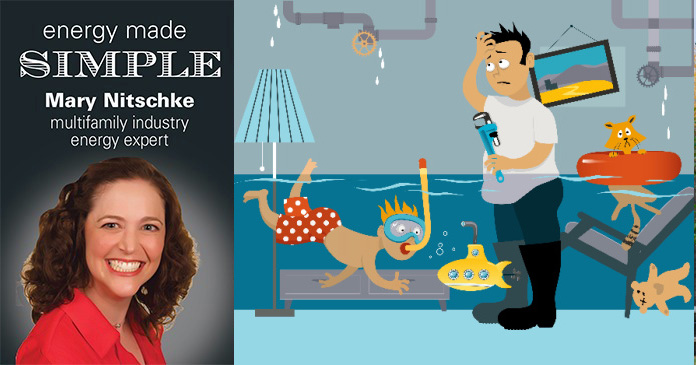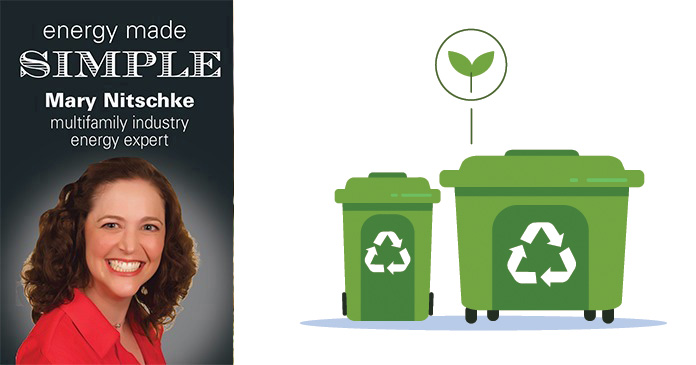Since California got a hose-in-the-sky rain this week, it is a good time for us to think about water. Right now, California has loads of water, possibly more than its infrastructure was designed to handle, but if we recall just a few years ago, that same soggy state was challenged by drought.
As a commodity, water is both precious and dangerous. If there is water where water is not designed to be (flood) then it can be catastrophically expensive for property owners. We pay attention to this. We invest in technology to mitigate the risk of flood and to control our insurance costs. Yet we often ignore or clutch our purses tight when it comes to controlling the operational uses of water that can be just as expensive over time when ignored.
We do not tend to pay attention to water when it is not carrying a house down the street or pouring out of the ceiling. Have you ever been to a property where there are water stains on the building because a sprinkler was broken for so long that the gusher has stained the paint? I have. Lots of times. I have heard stories of water leaks under buildings that have gone on so long that residents started complaining about the smell. Or we misinterpret what water is telling us. How many times has the landscape looked withered, so the irrigation was increased only to discover that the wilting was caused by overwatering and the vegetation was drowning? I once entered a unit for an inspection and the resident told me her bathroom was haunted. When I asked her how she knew it was haunted, she told me her celestially discharged husband periodically flushed the toilet to remind her that he was still there.
There are some basic technologies out there that will truly help us with water management at the property. We need to employ those technologies generously. For example, if you have property in a state that has drought restrictions and penalties for excess water usage, really consider smart irrigation systems that will help you manage your water allowance. I have seen markets where the payback period of these systems can be less than 12 months.
Another opportunity to manage your water is what I like to call “the penny test”, which is using a blue dye tablet (costs about a penny per tablet) to perform leak detection on a toilet. I once saw a property that did this test on every toilet during a unit-by-unit inspection and discovered that 60% of the toilets were leaking. They fixed them and saw a 30% reduction in water consumption and, subsequently, water costs. As a friend of mine would like me to remind you all. When you save water, you are not just reducing your water expense, but your sewer too. (What goes in goes out, right?)
I will get off my water bucket now. I just want our industry to look at water as more than just a source of catastrophic events to be mitigated; it is a commodity that costs us thousands of dollars, every day. We should invest in sound water management.













